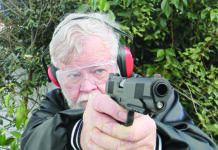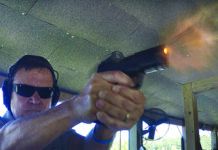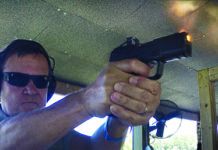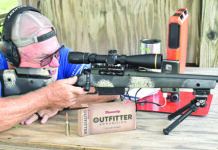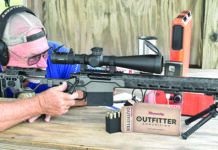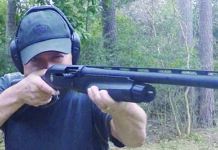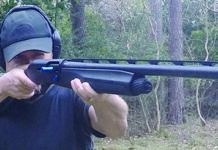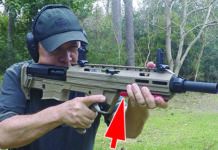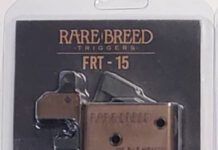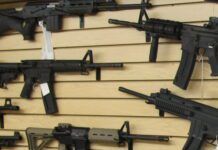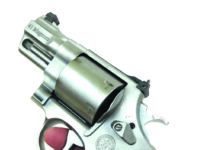Re “Classic Police Self-Loaders:
Model 8 Versus Model 1907,” April 2011
Your decision to run articles on older guns is great. I’m sure you hear about what you do wrong, but I wanted to cheer you on in this area. I just renewed my subscription because of it. I couldn’t care less about the latest AK-whatever, although I support your right to have whatever you like. The writers of the Second Amendment meant for you to have any gun the government owned, since its purpose was to protect you from the government, but that’s another story.
I’m 78 and prefer old-fashioned-looking guns. There are a lot of good old guns that are not and probably won’t be collectible. I have “collected” four Remington 788s. Their claim to fame was accuracy at a very reasonable price. Two of them are “collectible”: A 30-30 and a 44, because Remington didn’t make them in those calibers except for two years or so. I doubt they have much value, but they look like good rifles to me and were affordable. I shoot them in cast lead-bullet matches. My other two are a 308 Win. and a 223. They’re nothing special, but they all shoot well and I like them. Would the Remington 788 make an article?
—Bill, via email
Bob Campbell is developing your idea. The moderately priced 788 bolt-action rifle was commonly referred to as the “Remington “budget tackdriver.” It was introduced in 1967 and discontinued in 1983. More than half a million were made, so it had its adherents. ~Todd Woodard
Re “Split the Difference: Is a $700 5.7×28
Upper a Good AR Buy?,” March 2011
Your recent article on AR-15 upper receivers got me thinking again about building an AR-15 in 6.8mm. There’s just one problem: The forward assist.
During Vietnam in ‘68 and ‘69, I was a K-9 handler in the Air Force. We were issued Colt M16s and CARs with NO forward assist. Apparently, this was an Army thing at that time. Now everybody has them! I have no use for the forward assist and would like to know if there is any manufacturer who makes an upper receiver without one? I have looked around in several catalogs, but don’t have the resources that you do. If you know of one that’s smooth on the right side, please let me know. I have enjoyed your magazine for many years and consider it to be the Consumer Reports for guns. You both have a rating system that also tells me what not to buy or use. That is sometimes more important than trying to find or obtain the top-rated products. Keep up the good work, and I hope you have good news for me.
—Gregory Helm
Reno, Nevada
We got some help with your question on the Gun Tests Facebook page. Brian Stantz wrote, “JP Enterprises has uppers without the forward assist” and suggested looking on www.ar15.com and www.vltor.com/mur.htm. Michael Montz sent a link to the NoDak Spud LLC Retro AR Page (www.NodakSpud.com), and added, “Fulton Armory and Gunnys Surplus has some 604-type uppers too. I have a Nodak 604 upper (w/601 lower), and the workmanship is excellent.” Scott Jarvis said, “DPMS has one called the ‘Lo Pro.’ No forward assist or ejection cover.” We appreciate their contributions. ~Tracey Taylor
Re “Sabatti 450/400: Affordable Double Rifle,
Perfect Caliber,” November 2010
I really enjoyed your article on the Sabatti double rifles. I have always wanted a double, and I even considered the Pedersoli with hammers in 45-70, which at the time was priced about the same as the Sabatti in the same caliber. I have handled the Sabatti and am amazed at how lively it is. Wish it had ejectors! Do you feel this rifle would handle the pressures of the very stout 45-70 loads, such as Garretts? Additionally, do you think this rifle could safely be re-chambered in 45-90 or 45-100 with smokeless loads?
By the way, I agree with you about the rear sight and the recoil pad—they need a little improvement. Thanks for a great article.
—Brian, via email
Double rifles are generally built around one specific load. The manufacturer will always specify this. The rifles almost certainly will handle any 45-70 loads out there, but will just as certainly not regulate with any but the one specific load called out by the maker. Re-chambering double rifles for other calibers will generally require re-regulation to get the barrels to print together again. This is a costly and tricky job, and no maker will do this with your handloads. You could also run into trouble with too-thin barrel walls from lengthening the chambers. In short, don’t.
I have not personally seen the lower-priced Sabatti db rifles, which are chambered for 45-70 and 9.3x74R, but a good friend who really knows double rifles has, and told me they looked pretty doggoned good for the price. ~Ray Ordorica
Re: “Is Ruger’s new Gunsite Scout Rifle
a Pretender, or Contender?,” May 2011
I was not introduced to the long-eye-relief scope from the writings of Jeff Cooper; instead, I first became familiar with their use on the dangerous-game rifles made by Art Alpin of A-Square in Ethiopia, 1987. Art made a fairly beefy rifle with a 2X-power Leupold pistol scope just forward of the receiver ring. It was a great arrangement that made target acquisition extremely fast.
So a few years later I decided to have the same sighting system on my M1 Garand. I brought my rifle to gunsmith Brad Lewis of Manchester, NH, who did a wonderful job installing a steel base forward of the receiver ring. When he got done it looked like it had always been part of the rifle. Think about it: I could enjoy magnification, quick target acquisition, top loading and not interfere with the mechanism of the rifle. The scopes that I experimented with were in the following order 2.5X Phantom Pistol Scope, a 4X Phantom Pistol Scope, a 2.5X Leupold Scout Scope, and a Burris 2-7X intermediate scope.
All went well with the first scope I installed. Shooting on the bench coupled with reloads brought out more accuracy than I thought that the rifle had. Then I started some rapid-fire exercises. I had some misses when I did not perfectly duplicate the same spot weld as I had on the bench. So I went on the back the bench, and after a while I realized that I could walk a group around the 100-yard targets simply by modestly relocating the point where my cheek contacted the stock. While some of the manufacturers were good enough to tell me at what range their scopes were parallax free, my experience was that it was just that range, and parallax continued to be a problem at random ranges.
Obviously, I have very limited non-technical experience. Certainly the A-Square rifles were very large, and used standing, at close ranges, in less than benchrest-friendly calibers, so I did not have the opportunity to notice a parallax problem, if there ever was one. With the renewed interest in the use of these scopes, I would be thrilled if your great staff took on the testing of some of the current offerings of intermediate relief scopes on an accurate scout-type rifle. This type of rifle is intended for rapid deployment, during which time one does not always acquire an ideal spot weld; so, if parallax is going to be as much a problem as I experienced, then the whole scout-type arrangement may be for a more limited group of shooters. I offer my experiences in order to help narrow the study. Thank you for taking the time to read this.
—Arthur Kyricos
York Harbor, Maine Remington 1911s
Just a quick question: Are you gents planning on reviewing the new 45 ACP Remington 1911s that just came out? I know several people, including myself, who are very interested in its performance.
—Dave, via email
Working on it. ~Todd Woodard
P99c 9mm and/or a Glock 29
Can you test the Walther P99C in 9mm? It is an awesome-feeling 9mm compact that I am thinking about for CCW. Also, have you ever tested the Glock 29—the compact 10mm? I tried searching the site, but cannot find anything. Thanks, and keep the tests coming.
—Ken Frohnert, via email
Yes, we’re looking at the Walther. Also, way back in 1998 we tested the Glock 29. From that review: “In 200 rounds, this Glock failed to eject 22 times. These failures occurred 10 times with the Remington load and 6 times each with the Winchester and Federal loads. It was apparent to us that the ammunition wasn’t the problem. When clearing each of the stoppages, we found that the extractor was holding onto the spent case very tightly. This, in our opinion, was the reason why the ejector wasn’t able to kick the brass out of the pistol. Evidently, the extractor needed some work.
“We thought the Glock 29’s accuracy was acceptable for a compact pistol. It seemed to prefer heavier bullets. At 15 yards, Remington 180-grain and Winchester 175-grain jacketed hollow points achieved five-shot groups that averaged 2.15 and 2.18 inches, respectively. The groups produced with Federal 155-grain jacketed hollow points opened up to 3.40 inches.
“We found that the Glock 29 sat well in the hand, but pointed high. The grip was so short that it could only be grasped with two fingers. This was an aid for concealment, but not for establishing a proper shooting grip. However, the grip’s finger grooves and serrations afforded a non-slip hold. This lightweight little 10mm’s felt recoil was much milder than expected, thanks to the pistol’s well-designed recoil assembly. Kick and muzzle flip was only a little heavier than a full-size 10mm.” ~Todd Woodard
Re: “9mm +P and Other Powerful Loads:
Black Hills Is a Best Buy,” April 2011
In the ammunition comparison article in the April 2011 issue, Speer Gold Dot Short Barrel No. 23811 9mm is listed in the NON +P 9mm Specialty Load section. You also state “An interesting load that is not in the league with the +P loading, it is nonetheless a good choice for light 9mms.”
However, in the accompanying picture, the actual product box clearly states “9mm Luger +P 124 Gr. GDHP.” It also states on the Speer website that this round is +P rated.
Is there some kind of mix up? Or, did your testing reveal something that Speer is misrepresenting?
—Scott Hughes
Greenville, SC
This took a while to research. No mix up, but an oversight on my part. Apologies. Just the same, this is a mild round. I grabbed a box of standard-pressure 124-grain Gold Dots and found they run about 1099 fps. The SB +P 124-grain load goes 1125 fps—not a big difference. ~Bob Campbell
Re: “Compact 9mms Head to Head:
New Ruger LC9 Vs. Kel-Tec PF9,” April 2011
I have been carrying my PF9 for some time. The pistol would flip too much when I used the flat magazine plate because I could only get two fingers on the grip. With the extension, I could get three fingers on the grip, but the finger under the trigger guard got mashed to the point of ruining my aim for follow-up shots. I ended up epoxying the extension plate underneath the flat plate, making it comfortable to shoot and still removable for cleaning.
One thing you did not mention is the magazine release MUST be fully depressed when inserting an unloaded magazine or the plastic magazine follower will be chewed down by the release and then the slide hold-open device won’t engage. Unless they have changed the tolerances since mine was produced, reloaded brass WILL jam and you have to have to push the brass out with a rod through the barrel. —Dave Grant, via email
Re: “Colt Targetsman Versus Ruger’s 22/45:
Which is the Bargain?,” April 2011
Great article/test on Colt and Ruger 22s! I can hardly wait for a test of the rimfire handguns for IHMSA competition. I have a Ruger Single Six Hunter, but my 54-year-old eyes have trouble with the sights. I was planning on getting either the Ruger Mark III Competition or the venerable Smith 41. I’m sure your test will help me a great deal with that choice. You are a great resource.
—Rick Peddicord, via email
Yay for the Right Coverage
Kudos for the articles regarding the Sabatti double rifle and the Winchester and Remington autoloader guard guns. A most refreshing change. Seems every gun magazine you pick up is full of AR and plastic pistol stuff. I have not renewed four out of five magazines I get.
As far as dropping the M1’s bolt on a loaded chamber, Army field manual FM 23-5 describes how to load the rifle with a single round dropped into the chamber. They don’t seem to be concerned about a slam fire.
And the “counterweight” in the Winchester 1907 is to provide more mass to resist the opening of the bolt against chamber pressure. I once read that it would take a mass of over 25 pounds to resist the pressure if such a gun were a 30-06!
I also hope there are more tests on individual guns, not necessarily just having them perform against one another. There are lots of available old and unusual firearms out there, and it would be most interesting to have them put through the Gun Tests wringer.
—Greg Fischer, via email



